Discover Top 5 Caves in Rishikesh on the Ganges for Meditation
Did you know that Rishikesh is home to enchanting caves that provide a peaceful haven for meditation? If you’re seeking a tranquil spot to deepen your meditation practice, look no further! The breathtaking landscapes of Rishikesh, filled with calming ambiance and captivating caves in Rishikesh , offer the perfect backdrop for your spiritual journey.
Rishikesh is famous for its serene environment, making it a popular destination for meditation enthusiasts. Below, we present a comprehensive guide to some of the most hidden caves in Rishikesh, ideal for your next meditation retreat.
Suggested Read- Mahavatar Babaji Cave: The Birthplace of Kriya Yoga
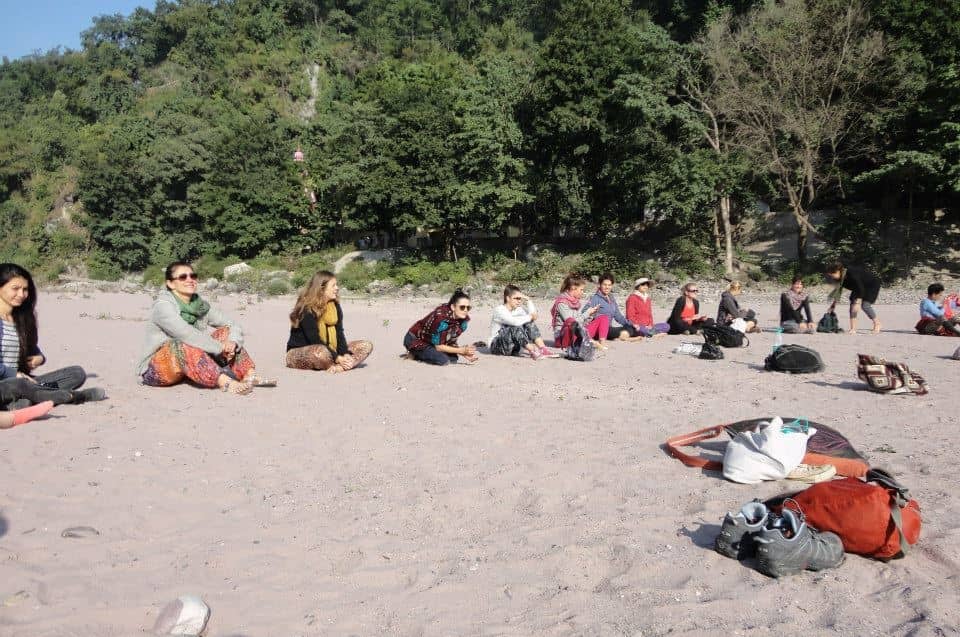
Meditation on the beach at Vasishta Gufa
Quick Look: Must-Visit Caves in Rishikesh
- Tat Wale Baba Cave: Nestled in the Swargashram area, these caves are not only steeped in history but also provide a serene environment for reflection and meditation.
- Jhilmil Cave: Just a short trek from Neelkanth Temple, Jhilmil Cave is known for its spiritual significance and tranquil atmosphere, making it a perfect spot for deeper meditation practices.
- Kailash Cave (Loyal Village): This cave is approximately 40 kilometers from Rishikesh and is famous for its peaceful surroundings and stunning views, offering a serene escape for those seeking spiritual enlightenment.
- Vashishta Cave: Close to the Gular region, this cave provides a secluded environment where you can connect with your inner self amidst the beauty of nature.
- Mauni Baba Cave: Mauni Baba cave lies just behind Beatles Ashram on the Paidal Marg of Rishikesh Neelkanth trail, is about 4 km away form Swarg Ashram area Rishikesh.
1. Vashistha Gufa: A Serene Retreat for Meditation Lovers
Vashishta Gufa, or Vashishtha Cave, is a mystical cave located on the banks of the sacred Ganges River, approximately 25 km from Rishikesh. Perched at an altitude of around 2000 feet above sea level, this ancient site is nestled along the Rishikesh-Badrinath road in Uttarakhand, making it an accessible yet tranquil escape for visitors.
Historical Significance
- Vashishta Gufa holds a special place in Hindu mythology. Sage Vashishtha, one of the Saptarishis (seven great sages) and the son of Lord Brahma, is renowned as the teacher of Lord Rama. Legend has it that after the tragic death of his children, Vasishta was overwhelmed with grief and attempted to end his life in the Ganges.
- However, Goddess Ganga intervened, leading Vasishta and his wife Arundhati to meditate at this location for centuries to heal their sorrow.
- The cave remained relatively unknown until 1930, when Swami Purushothamananda, a devotee who spent a significant part of his life in Kerala, discovered it. His ashram, located nearby, has since become a center for meditation and spiritual practice.

The Ashram and Living Sadhus
- Today, the Vashishtha Cave is managed by the Swami Purushottamanand Trust, and Swami Chaitanyanand Ji, a disciple of Swami Purushottamanand, is the current head of the ashram. The ashram, nestled within a grove of Gular trees, offers a serene atmosphere for meditation, surrounded by mountains and the sacred river.
- Visitors will find several rooms outside the cave area, where numerous sadhus (ascetics) reside permanently, contributing to the spiritual ambiance of the location.
Why Visit Vashishta Gufa?
- Meditation Retreat: A perfect destination for meditation enthusiasts looking to escape the chaos of daily life.
- Spiritual Heritage: Immerse yourself in the rich history and mythology associated with sage Vashishtha.
- Natural Beauty: Enjoy the serene environment surrounded by lush greenery and the majestic Ganges.
Inside the Cave: A Spiritual Experience
At the far end of the cave, you’ll find a Shiva Linga illuminated by a flickering oil lamp, creating a sacred atmosphere. The absence of external noise contributes to the peacefulness of the space, while the cool air brings a refreshing relief. The interior is suffused with the gentle aroma of burning oil and wood, enhancing the spiritual ambiance and making it an ideal location for deep meditation.
Suggestion – Vashistha Cave is the best option for meditation sitting in Rishikesh
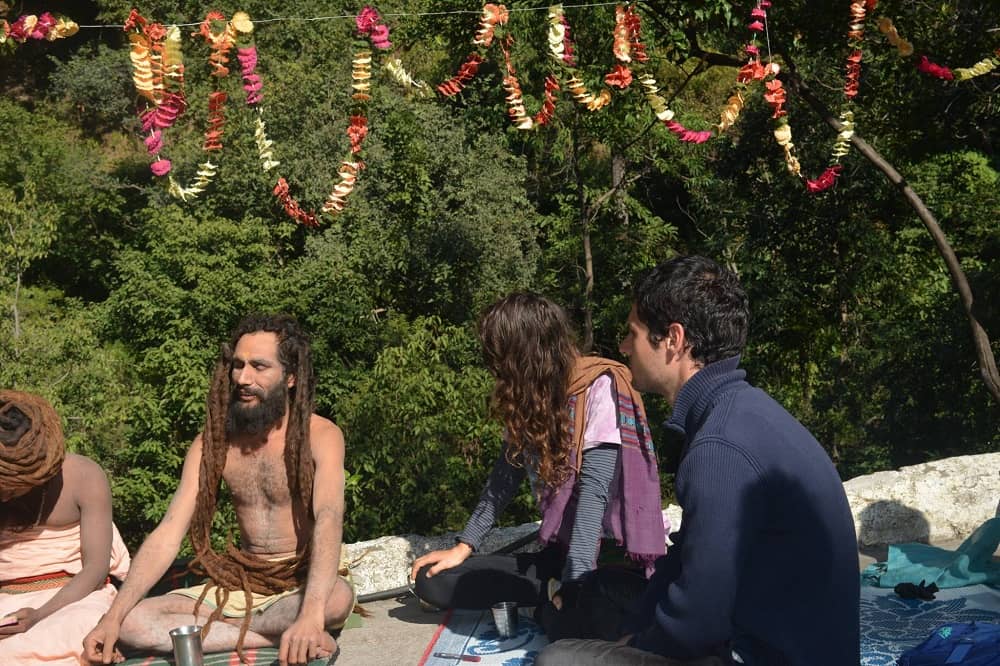
2. Mauni Baba Cave: Where Silence Resides
It is located behind the Beatles Ashram, this small yet profound cave served as a haven for meditation for the venerated Saint Mauni Baba. Delve into the cave’s tranquil embrace for a unique and offbeat meditation experience.
The Legacy of Mauni Baba
- The ashram is dedicated to the memory of Mauni Baba, an enlightened monk whose teachings and presence continue to inspire many. The name “Mouni” translates to “silence,” and “Baba” signifies “Sadhu” or holy man.
- Mauni Baba dedicated his life to the practice of silence, believing it to be a profound path to spiritual enlightenment. His legacy attracts seekers of truth and tranquility who come to reflect and meditate in this sacred space.
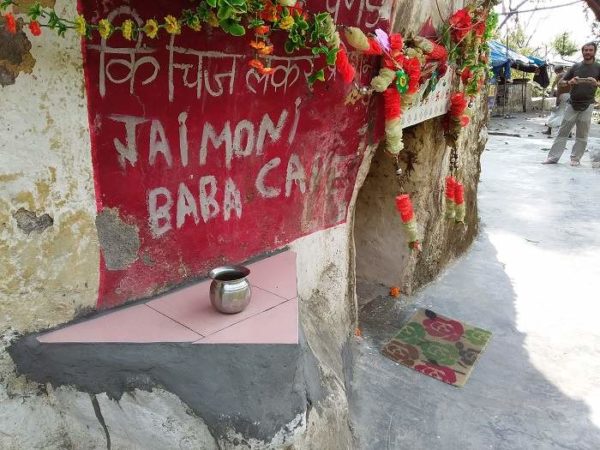
A Living Cave in Rishikesh
Mauni Baba Cave serves as both a natural formation and a spiritual retreat. Within its walls, you can feel the peace and serenity that has attracted numerous pilgrims and spiritual seekers over the years. The cave is a unique blend of nature and spirituality, making it an essential part of the ashram experience.
Life at the Cave
- The ashram is home to two resident Sadhus who embody the teachings of Mauni Baba. The primary Sadhu, Jatadhari Baba, is a dedicated Himalayan ascetic known for his rigorous practices of austerity and detachment from worldly affairs.
- Following the principles of Shaivism, a sect devoted to Lord Shiva, Jatadhari Baba is easily recognizable by his long hair that reaches his feet, symbolizing his commitment to his spiritual path.
- The second resident is a disciple of Mauni Baba, who helps maintain the ashram and supports the spiritual practices of its visitors. Together, they create a welcoming atmosphere for those seeking solace and spiritual growth.
Suggestion- Top 10 Places to visit in Rishikesh

3. Jhilmil Cave: Nature’s Abode
Rishikesh is a really cool city near the big Himalayan mountains! People come here to pray and do fun things like rafting. But guess what? There’s a secret place called Jhilmil Cave that’s super special and not many people know about! It’s only 30 kilometers away from Rishikesh.
- Jhilmil Cave is a magical cave that formed a long, long time ago, like thousands of years! It got its name from a wise man called Jhilmila Sadhu who liked to think deep thoughts there. He is said to have become very wise in this cave. You can find the cave just 4 kilometers from the Neelkanth Mahadev temple on a mountain called Manikoot Parvat.
History Of The Cave
- This cave is really, really old and has a lot of stories! A great devotee of Lord Shiva named Baba Gorakhnath used to pray and do special rituals called Hawan in this cave. It’s said that Lord Shiva even talked to him here about yoga! Wow! This cave is super important to people who love Hindu stories and want to feel peaceful.
Adventure Of The Cave
- To get to Jhilmil Cave, you have to go on an exciting adventure called trekking! It can be a bit tricky because there aren’t many signs and the path can be bumpy. But it’s okay because when you reach the top, you get to see the most amazing views! Just be careful when it rains because it can get slippery!
- And if you like to be calm and quiet, this cave is perfect! You can try saying the word ‘Om’ and hear it bounce all around the cave. It sounds really cool! It’s like magic!
- So, if you ever go to Rishikesh, don’t forget to visit Jhilmil Cave! It’s a special treasure waiting to be discovered!
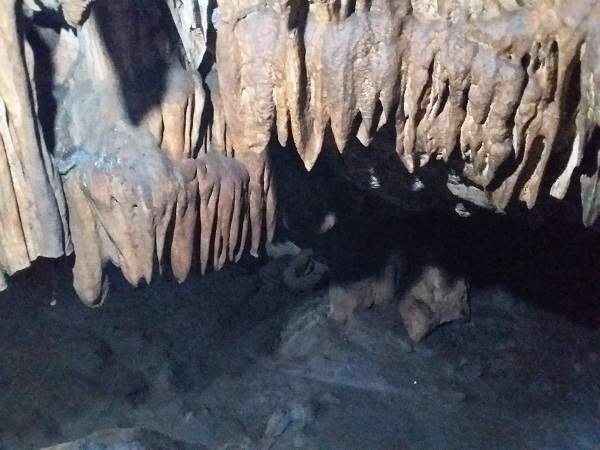
4. Kailash Cave near Rishikesh
Kailash Cave, once inhabited by spiritual seekers. Now radiating calmness and tranquility, this cave invites individuals from all walks of life to engage in profound contemplation and serenity. This is about 40 km far from Rishikesh.
Directions from Rishikesh to Kailash Cave (Loyal Village)
- If you’re planning to visit Kailash Cave in Loyal Village, it’s about 31 kilometers from Rishikesh. Here’s how to get there step by step:
Starting Point: Tapovan, Rishikesh
-
- Begin your journey in Tapovan, Rishikesh.
First Stop: Neer Waterfall
-
- Head towards Neer Waterfall, which is 4 kilometers away. It’s a beautiful spot to relax and enjoy nature!
Next Stop: Shivpuri
-
- From Neer Waterfall, travel 9 kilometers to reach Shivpuri. This area is famous for adventure activities like river rafting.
Third Stop: Vashisht Gufa, Gular
-
- Continue your journey for 7 kilometers to Vashisht Gufa, located in Gular. This cave is known for its spiritual significance.
Final Destination: Kailash Gufa, Loyal Village
-
- Finally, make your way 14 kilometers from Vashisht Gufa to arrive at Kailash Gufa in Loyal Village. This cave is a hidden gem that offers a peaceful retreat.
Summary of Distances:
- Rishikesh to Tapovan: Start your journey
- Tapovan to Neer Waterfall: 4 km
- Neer Waterfall to Shivpuri: 19 km
- Shivpuri to Vashisht Gufa, Gular: 7 km
- Vashisht Gufa to Kailash Gufa, Loyal Village: 14 km
Happy travels! Enjoy the scenic beauty and the tranquility of the caves along the way!
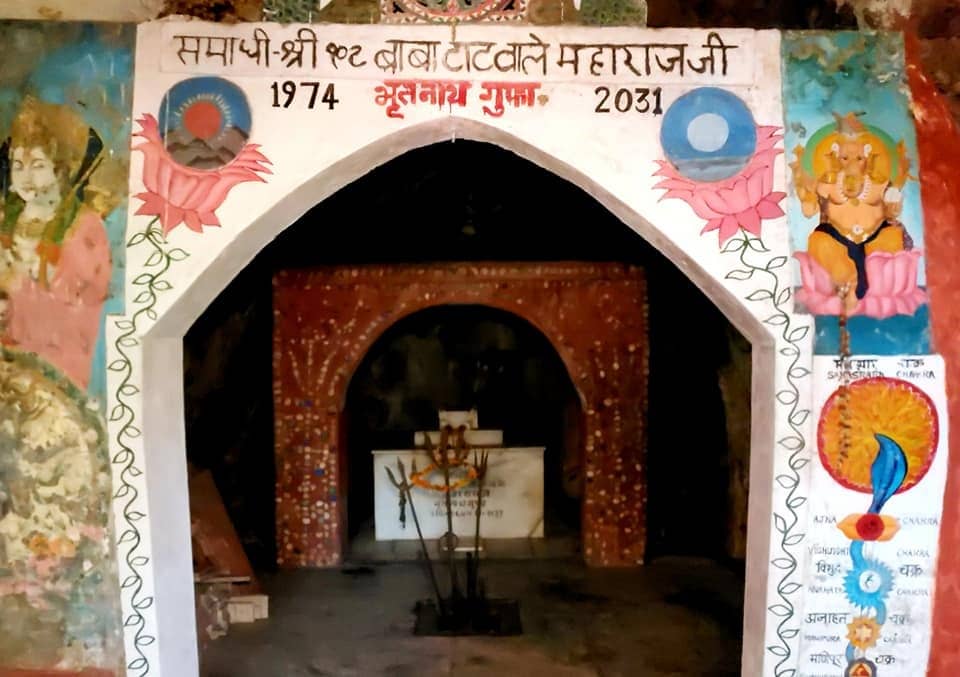
6. Tat Wale Baba Cave
Tat Wale Baba Cave holds the vibrations of its legendary inhabitant. It lies above the city near Bootnath Temple , this cave offers awe-inspiring views of Rishikesh and the Ganges River.
About Tat Wale Baba
- Sri Tat Wale Baba is known as Rishikesh’s Great Saint. He lived in a cave nestled in the forest, overlooking the sacred Ganga River, along with his devoted disciples. These caves, located in the Swargashram area, are near the public road and are called Bhutnath Temple road.
- His followers, who referred to themselves as yogis, traveled from all over India and beyond to seek his wisdom. Notably, the famous yogi Maharishi, who taught the legendary British rock band The Beatles, regarded Sri Tat Wale Baba as his teacher.
- Tat Wale Baba was an imposing figure, standing nearly two meters tall and as strong as an elephant. He could effortlessly carry heavy stones, but his voice was unexpectedly soft, almost like a child’s.
Life Style
- His attire was simple, consisting of a thin piece of fabric, regardless of the season. On rare occasions, he put Jute sackcloth to shield himself from rain and cold, earning him the name Tat Wale, which literally means “one who wears sackcloth.”
- Despite appearing to be in his 30s, some believed he was close to 100 years old. Pilgrims claimed that just sitting near Sri Tat Wale Baba could alleviate many ailments and problems.
- He and his disciples sought Truth through dedicated practice of Yoga and Meditation. Together, they transformed the hillside, creating terraces, bathing spots, and adapting the caves into living and meditation spaces through their combined cosmic energy.
Early Life of Tat Wale Baba
- Tat Wale Baba was born to spiritual parents who were middle-class farmers in Punjab, India. He received little formal education and spent most of his early years helping his parents on the farm.
- Around the age of eight or nine, his innate spiritual nature led him to meditation, which he practiced fervently whenever he could. As he grew into his teenage years, he developed a strong physique, and his friends encouraged him to join the army. However, he did not enjoy military life, and after just two months, he left to pursue the life of a Sadhu.
- His quest for a guru led him to Sri Jagannath Dasji in Ayodhya, who named him Sri Mahavir Dash Ji. Later, as Tat Wale Baba began wearing jute clothes, people began calling him Tat Wale, a name that stuck with him throughout his life.
- Tat Wale Baba’s legacy lives on, inspiring countless individuals to embark on their own spiritual journeys.
In Conclusion
In conclusion, the caves of Rishikesh offer a unique and tranquil setting for anyone looking to deepen their meditation practice or simply escape the hustle and bustle of everyday life. Each cave presents its own charm, steeped in history and surrounded by the natural beauty of the Himalayas.
Whether you’re seeking solitude, spiritual growth, or a peaceful retreat, these hidden gems provide the perfect backdrop for reflection and rejuvenation. As you explore these serene spaces, you’ll find that they not only enhance your meditation experience but also allow you to connect with the rich spiritual heritage of Rishikesh.
So, pack your bags, head to this captivating destination, and immerse yourself in the serenity of the caves. Your journey to inner peace awaits!
Caves in Rishikesh Caves in Rishikesh Caves in Rishikesh Caves in Rishikesh Caves in Rishikesh Caves in Rishikesh Caves in Rishikesh Caves in Rishikesh Caves in Rishikesh Caves in Rishikesh Caves in Rishikesh Caves in Rishikesh Caves in Rishikesh Caves in Rishikesh Caves in Rishikesh Caves in Rishikesh Caves in Rishikesh Caves in Rishikesh




Comments are closed.